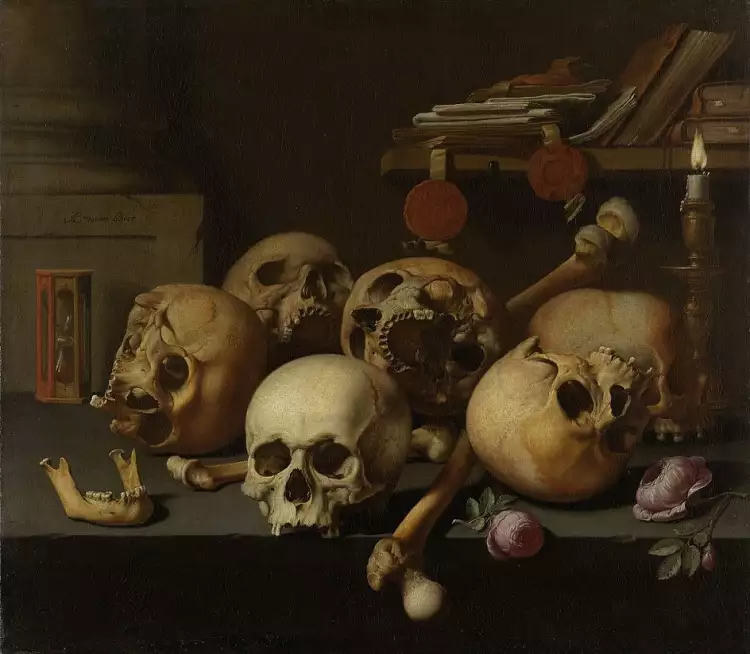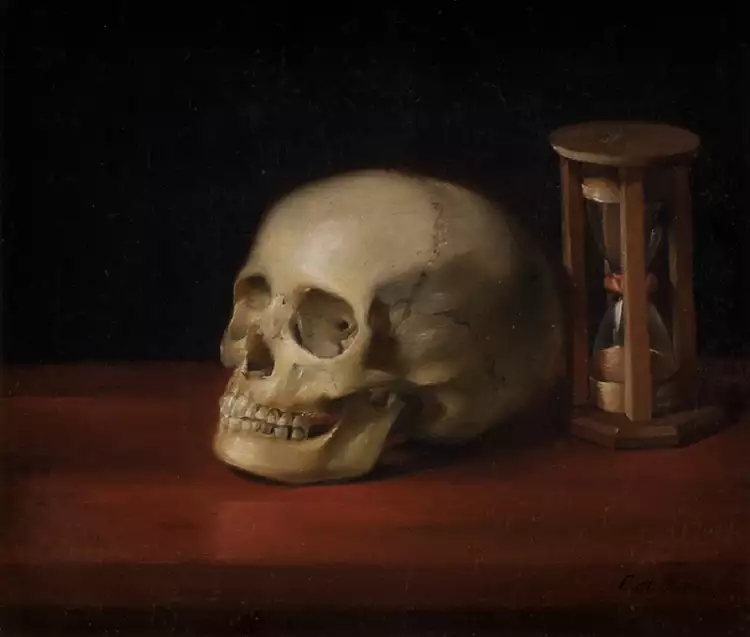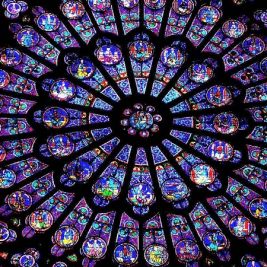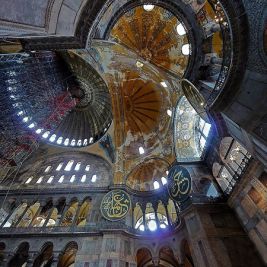
Vanitas is a genre of art that prompts the viewer to contemplate the inevitability of death
Vanitas is a genre of visual art and a subgenre of still life, in which the centerpiece of the artistic composition is a human skull. Vanitas, as a popular genre of painting, was most prevalent in the Netherlands and Flanders from the mid-16th to the mid-17th centuries. Works of this genre, in allegorical form, symbolize the fragility of human life, the futility of pleasures, and the inevitability of death.
 Vanitas. Aelbert Jansz. van der Schoor. Vanitas, 1640-1660
Vanitas. Aelbert Jansz. van der Schoor. Vanitas, 1640-1660
Vanitas is a genre with a pronounced philosophical and religious meaning. The term "vanitas" is borrowed from the Old Testament of the Bible. In the Book of Ecclesiastes, attributed to the wise ancient Hebrew king Solomon, there is the expression "vanitas vanitatum omnia vanitas."
 Vanitas. Antonio de Pereda y Salgado. Vanitas, 1636
Vanitas. Antonio de Pereda y Salgado. Vanitas, 1636
Features of the vanitas genre
Vanitas, like other subgenres of still life, is closely linked to allegory. Each object depicted in the painting here has a symbolic meaning, subtly hinting to the viewer about the transience of human life.
 Vanitas. Jacques de Claeuw. Vanitas, 1650
Vanitas. Jacques de Claeuw. Vanitas, 1650
To enhance the emotional impact on the viewer, many paintings prominently display philosophical phrases in Latin, including:
- Memento mori – remember death.
- Tempus fugit – time flies.
- Ubi sunt – where are they.
- Sic transit gloria mundi – thus passes the glory of the world.
 Vanitas. Jacques Linard. Vanitas, 1645
Vanitas. Jacques Linard. Vanitas, 1645
In paintings within the vanitas genre, depictions of human figures are very rare, and various objects are often arranged in a chaotic manner. In addition to painting, this genre is also used in other forms of visual art: sculpture, engraving, and even in jewelry, although much less frequently.
 Vanitas. Christian Albrecht Jensen. Skull and Hourglass, 1814
Vanitas. Christian Albrecht Jensen. Skull and Hourglass, 1814
Main symbols of the vanitas genre and their interpretation:
- Skull — inevitability of death.
- Decaying fruits — withering of life, onset of old age.
- Wilting flowers — transience of life.
- Green branches and grain sprouts — reminder of the cycle of life and its rebirth after death.
- Snail — human sloth, one of the seven deadly sins.
- Soap bubble — vulnerability of life.
- Extinguished candle — departed human soul.
- Playing cards, dice, chess — passion for gambling, indulging in dubious pleasures.
- Mirror — vanity, pride, the ephemeral nature of existence.
- Broken and empty vessels — absence of life energy.
- Hourglass — transience of time.
- Musical instruments — ephemerality of a carefree life.
- Money and valuables — wealth.
- Globe, crown, or scepter — earthly power.
- Books — futility of knowledge.
- Medical instruments — reminder of human diseases.
 Vanitas. Harmen Steenwijck. Still Life: An Allegory of the Vanities of Human Life, 1645
Vanitas. Harmen Steenwijck. Still Life: An Allegory of the Vanities of Human Life, 1645
Artworks created in the vanitas genre not only compel one to remember the transience of life but also invite contemplation on the salvation of one's soul. This idea aligns completely with the teachings of all Christian churches, regardless of their denominational affiliation. Therefore, the vanitas subgenre was widely prevalent in both Catholic and Protestant countries in Europe.
 Vanitas. Evert Collier. Vanitas with books, manuscripts and a skull, 1663
Vanitas. Evert Collier. Vanitas with books, manuscripts and a skull, 1663
History of the development of the vanitas genre
It is challenging to confine the history of the vanitas genre within clear time frames, as depictions of human skulls in art date back to ancient times in various cultures. For example, mosaics depicting Memento mori motifs, dating back to the 1st century BCE, have been discovered in excavations at Pompeii.
 Vanitas. Ancient Roman mosaic Memento mori, 1st century B.C.
Vanitas. Ancient Roman mosaic Memento mori, 1st century B.C.
In the Romanesque era, images of skulls were often placed on the walls of churches to constantly remind parishioners of the need for repentance and redemption of sins due to the inevitability of death. Gothic masters of painting and graphics in the mid-14th century began mass-producing allegorical artistic compositions called "Dances of Death" on the theme of the transience of human existence.
 Vanitas. Michael Wolgemut. Danse Macabre, late 15th century
Vanitas. Michael Wolgemut. Danse Macabre, late 15th century
During the Renaissance, with its lofty humanistic ideals, new genres in visual art began to rapidly emerge and develop, providing artists with ample opportunities to realize new ideas. Symbolic depictions of skulls were often used in their paintings by many great Renaissance masters, including El Greco and Albrecht Dürer.
 Vanitas. Unknown artist. Sleeping Cupid with a skull, early 16th century
Vanitas. Unknown artist. Sleeping Cupid with a skull, early 16th century
The prerequisites for the formation of the vanitas genre were already present, but the symbolic objects in Renaissance artists' paintings served an auxiliary function. Characteristic allegorical symbols were usually placed on the reverse side of the artwork, complementing it with hidden meaning.
 Vanitas. Jan Davidsz de Heem. Vanitas with skull, book and roses, 1630
Vanitas. Jan Davidsz de Heem. Vanitas with skull, book and roses, 1630
In the mid-16th century, initially in the Netherlands and then in Flanders, the first full-fledged works of art in the stylistic of vanitas appeared. It was a time of rapid growth in the popularity of still life, which, after a century, became a full-fledged genre of painting, bringing worldwide fame to many Dutch artists.
 Vanitas. Maria Margaretha van Os. Vanitas, 1862
Vanitas. Maria Margaretha van Os. Vanitas, 1862
The center of vanitas development in the Baroque era became the small university town of Leiden, where the most renowned artists of this genre lived and worked. Among numerous names, the following masters stand out:
- Jacob de Gheyn the Younger.
- David Bailly.
- Pieter Symonsz. Potter.
- Harmen van Steenwyck.
- Jan Davidsz de Heem.
- Jacques de Claeuw.
- Adriaen van der Spelt.
 Vanitas. Paul Cézanne. Still life with skull, candlestick and book, 1866
Vanitas. Paul Cézanne. Still life with skull, candlestick and book, 1866
In addition to the Netherlands and Flanders, vanitas gained popularity in other European countries. Many works of art in this genre were created in Germany, Italy, Spain, France, but they did not reach the level of fame achieved by the Dutch school of painting.
 Vanitas. Bohumil Kubišta. Still life with Skull, 1912
Vanitas. Bohumil Kubišta. Still life with Skull, 1912
By the end of the 17th century, the Rococo era replaced Baroque in European art. Society's tastes changed significantly, and the symbolism of vanitas became uninteresting to the wider public. From this time, the inevitable decline of the genre began, and in the subsequent centuries, only a few painters addressed vanitas themes in their work. In conclusion, it is worth acknowledging that this trend has continued into the current 21st century.
 Vanitas. Matthias Laurenz Gräff. Memento mori, 2017
Vanitas. Matthias Laurenz Gräff. Memento mori, 2017
On the Very Important Lot portal, every visitor has the pleasant opportunity to participate in art auctions to acquire masterpieces of antiquity from various historical epochs. Here, one can also purchase paintings in the vanitas genre from contemporary artists and enrich their collections.
 Fashion Photography - the Dazzling World of Fashion, Models, and Glossy Magazines
Fashion Photography - the Dazzling World of Fashion, Models, and Glossy Magazines  Paul Mathias Padua: Sensitive power nature
Paul Mathias Padua: Sensitive power nature  Genre of Nude in Painting: Evolution and Historical Trends of the Nude Style
Genre of Nude in Painting: Evolution and Historical Trends of the Nude Style  Marquetry is the elegant ancient art of inlaying veneer
Marquetry is the elegant ancient art of inlaying veneer  Hermann Historica Auction: Kunst, Antiquitäten & Antiken
Hermann Historica Auction: Kunst, Antiquitäten & Antiken  Stained glass is a grand masterpiece of monumental art made from small pieces of colored glass
Stained glass is a grand masterpiece of monumental art made from small pieces of colored glass  Art: its essence, types, genres, and history
Art: its essence, types, genres, and history  The painting "Herodias" by Ivan Nikolaevich Kramskoi is a moment of terrifying realization instead of the triumph of victory over the enemy
The painting "Herodias" by Ivan Nikolaevich Kramskoi is a moment of terrifying realization instead of the triumph of victory over the enemy  Byzantine art is a vast realm of unique artistic heritage of humanity
Byzantine art is a vast realm of unique artistic heritage of humanity  Gothic - the mystical art of the Middle Ages
Gothic - the mystical art of the Middle Ages